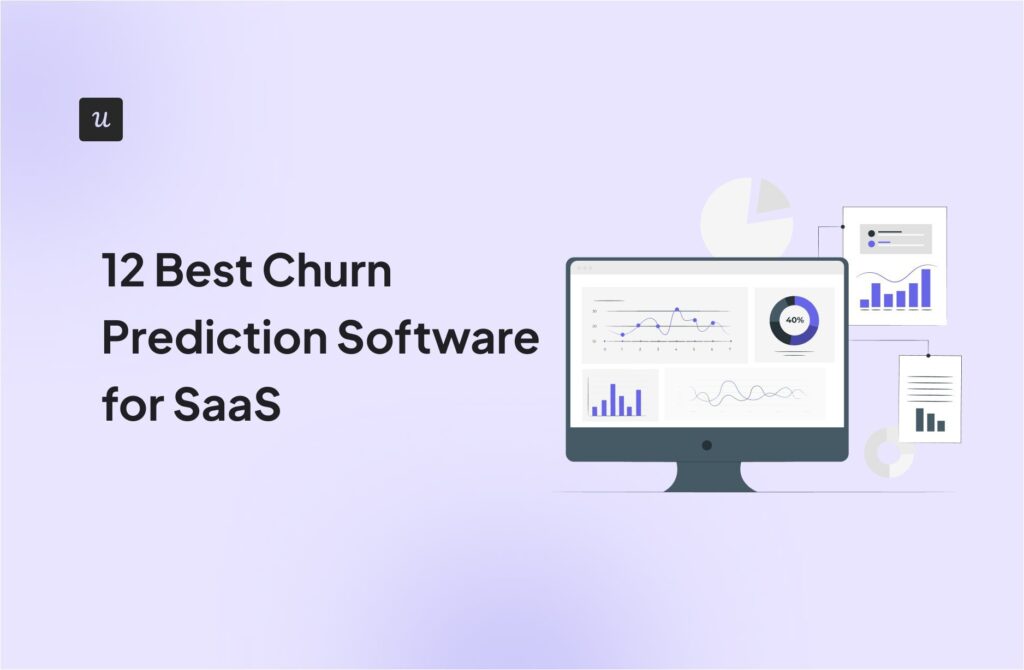
It takes a fair bit of effort and time to keep up with the constant innovation in the product management software space. The tools are constantly evolving and changing their pricing plans, so it may be difficult to ensure that your product team is using the right tools and getting the best value for the money.
Fear not though, as our product management software guide will give you insights into some of the best-in-class applications that will boost your team performance and help you build successful products!
Let’s get right to it!
Try Userpilot Now
See Why 1,000+ Teams Choose Userpilot

TL;DR
- Product strategy tools assist product teams in defining, creating, and executing product strategies aligned with business objectives and user needs.
- Roadmapping software visualizes and plans product development over time, facilitating coordination and alignment across teams.
- A project management tool enables effective planning and execution of product initiatives.
- Wireframing and prototyping software aids in designing and validating product UI and interaction flows.
- Customer feedback tools facilitate the collection and analysis of user feedback for customer-centric decision-making.
- Product analytics software provides objective insights into user behavior and product performance.
- Team collaboration tools enhance communication within product teams for increased productivity and smooth product delivery.
- When choosing the tools for your team, look for products that are easy to learn and have intuitive UI. Pay attention to support and customization, and make sure it has the right templates, integrations, and scalable pricing plans.
- When you look for a new product, make a list of the use cases and research tools for them. Explore the details of their functionality and pricing plans: a cheaper plan may not have the features you need. Use a free trial and book a demo whenever possible.
- Book the Userpilot demo to see how its feedback, analytics, and engagement features can support your product growth.
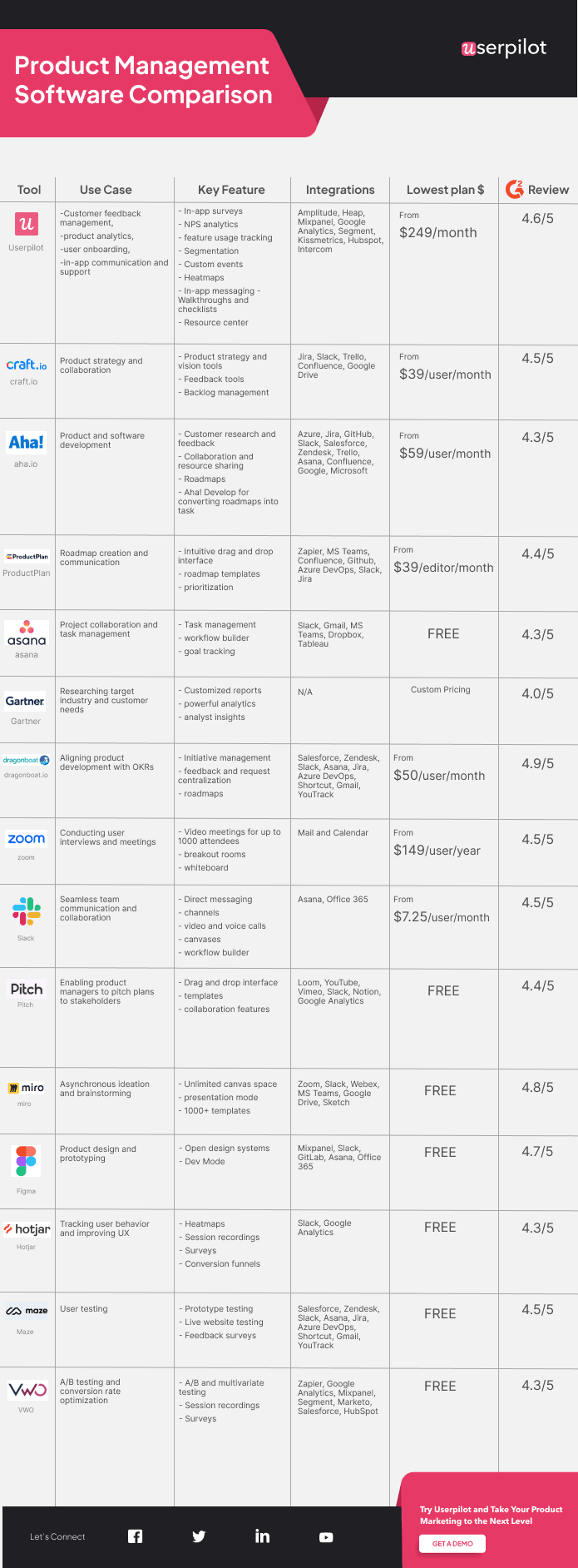
What are the different types of product management tools?
As a product manager, you rely on numerous tools for different aspects of your job. Let’s start our guide with a quick glimpse of what kind of software you might need in your tool stack.
Product strategy tools
Product strategy tools are software solutions designed to assist product teams in defining, creating, and executing their product strategy.
These tools enable product managers to conduct market research, competitor analysis, and user feedback analysis. They provide you with insights essential to make informed decisions about the product direction and help you define the product’s vision, goals, and strategic initiatives.
This allows teams to make better strategic decisions and align their efforts with the overall business objectives.
Roadmapping software
Roadmapping software helps product teams visualize and plan the development of their products over time.
It allows teams to create and communicate a product roadmap that outlines the key milestones, features, and deliverables. This enables better coordination and alignment of different teams across the organization.
Project management software
Project management software is vital for product teams to effectively execute their product initiatives.
It enables teams to create tasks, assign responsibilities, set deadlines, and track progress. It improves team productivity and efficiency by providing them with a centralized platform for collaboration, document sharing, and communication.
Wireframing and prototyping software
Wireframing and prototyping software are essential tools for product teams during the design phase.
They allow teams to create low-fidelity wireframes, prototypes, and interactive mockups of the product. By visualizing the UI and interaction flows, designers can validate design ideas, gather feedback and iterate on the UX before actual development begins.
Using such tools improves collaboration between designers, developers, and stakeholders to ensure they’re on the same page. More importantly, it helps launch already strong MVPs.
Customer feedback tools
Customer feedback tools assist product teams in collecting, managing, and analyzing feedback from their users.
Such tools provide channels for users to submit active and passive feedback, like in-app and email surveys or in-app feedback widgets.
Thanks to them, teams can better understand user needs, preferences, and pain points, and as a result, make more customer-centric product decisions.
Product analytics software
Product analytics tools provide teams with objective and reliable insights into user behavior, product usage, and performance.
Such insights are essential for teams to make evidence-based product development decisions and continually improve product performance.
Team collaboration tools
Team collaboration tools facilitate effective communication and collaboration within product teams.
These tools include features like real-time messaging, voice and video calls, and file-sharing.
As a centralized platform for team members to communicate and share knowledge, team collaboration tools boost productivity, drive creativity and innovation, and ensure smooth product delivery.
Must-have features of the best product management tool
What features should you look for when building your product management tool stack?
Regardless of what kind of software you’re after, a few essential characteristics to pay attention to are:
- Flat learning curve – your team needs to learn how to use it quickly so that you can start embedding the tool into your workflows without unnecessary delays.
- Intuitive and easy-to-use UI – the more difficult or complex the product, the more friction it brings to your workflows, and the more friction there is, the less likely you’re to use it.
- Support – both self-help resources and high-touch support need to be easily available in case you need a hand.
- Customization – so that you can set it up for the unique requirements of your SaaS operation.
- Integrations – essentials to optimize your workflows and ensure efficient information sharing between complementary solutions.
- Templates – they save you a lot of time as you don’t have to create support resources, workflows, or surveys from scratch.
- Scalable pricing plans – as the needs of your team or your user base grow, you need to be able to increase the usage caps without any financial penalties.
15 best product management software solutions of 2023
Here’s our list of product management software tools that can help you achieve your product goals.
1. Userpilot – for customer feedback management, and product analytics
Userpilot is a product growth platform that offers feedback, analytics, and in-app messaging functionality.
It enables you to collect user feedback and track their in-app behavior to gain granular insights into their needs and preferences. Equipped with such knowledge, you can onboard them more effectively and drive engagement to increase adoption and retention.
Key features
- In-app surveys with customizable templates for targeted feedback collection

- Dedicated NPS analytics, including qualitative response tagging
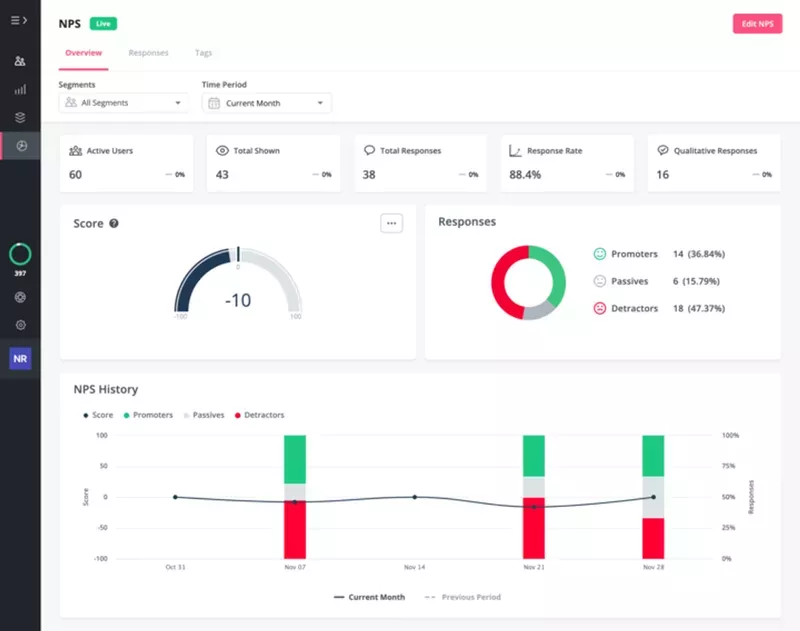
- Feature usage tracking (clicks, hovers, text infills)
- Event tracking, including custom events
- Heatmaps
- Funnel and path analysis (coming soon)
- Advanced user segmentation

- UI patterns for in-app messaging (modals, tooltips, banners, hotspots, driven actions, and slideouts)
- Interactive walkthroughs and checklists for user onboarding
- Resource center for delivering on-demand user support
- AI-writing assistant for developing quality microcopy
- Integrations with a range of tools, including Amplitude, Heap, Mixpanel, Google Analytics, and HubSpot
Pricing
Userpilot offers 3 pricing plans
- Starter, from $299/month
- Growth – custom pricing
- Enterprise – custom pricing
G2 review 4.6/5
2. Craft.io – for helping product teams create a product strategy
Craft.io is a tool that helps product teams create a product strategy and collaborate effectively throughout the product management lifecycle.
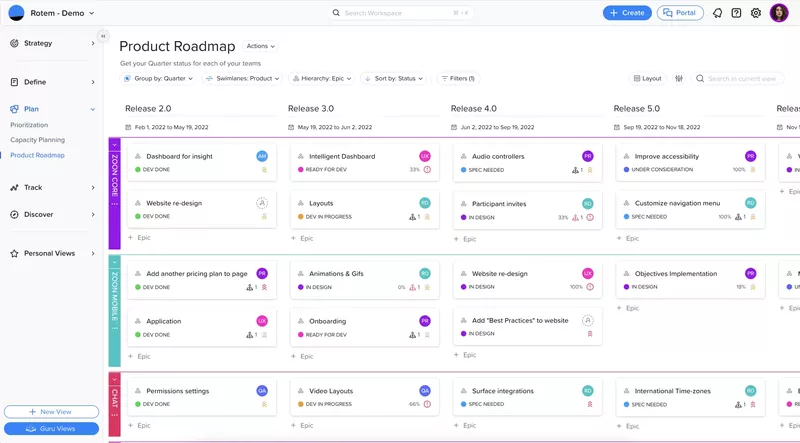
Key features
- Product strategy and vision tools
- Product portfolio management
- Feedback tools
- Backlog management
- Story mapping
- Prioritization using well-known frameworks
- Capacity planning
- Roadmapping
- Integrations with project management, collaboration, communication, software development, and design tools
Pricing
Craft.io offers 3 plans:
- Essential – from $39/user/month
- Pro – from $89/user/month
- Enterprise – custom pricing
G2 review 4.5/5
3. Aha! – for product/software development
Aha! provides product managers with a comprehensive platform to develop and execute product strategies. It helps product teams define, prioritize, and communicate product features and roadmaps.
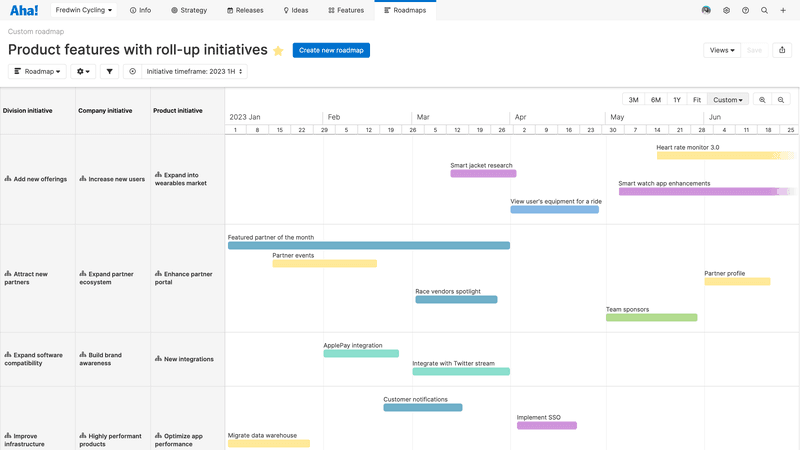
Key features
- Ideas – for customer research and feedback
- Notebooks – for collaboration and resource sharing
- Roadmapping
- Aha! Develop – to break down the roadmap into prioritized tasks for development teams
- Integrations with development (Azure, Jira, Github), communication (Slack, Teams), CRM (Salesforce, Zendesk), project management (Trello, Asana), knowledge management (Confluence), and workspace tools (Google, Microsoft)
Pricing
Aha! allows you to purchase each of its flagship products separately:
- Roadmaps – from $59/user/month
- Ideas – from $39/user/month
- Notebooks – from $9/user/month
- Develop – from $9/user/month
G2 review 4.3/5
4. ProductPlan – for creating roadmaps to guide the product development process
ProductPlan is a tool designed for creating roadmaps to guide the product development process. It offers a simple and intuitive interface to visualize product strategy and communicate plans with stakeholders.

Key features
- Intuitive drag-and-drop interface
- 25+ roadmap templates
- Prioritization features
- Integrations with Zapier, MS Teams, Confluence, Github, Azure DevOps, Slack, and Jira to name a few
Pricing
There are 3 different plans available:
- Basic – from $39/editor/month
- Professional – from $69/editor/month
- Enterprise – custom pricing
G2 review 4.4/5
5. Asana – for timely project collaboration
Asana is one of the best project management tools used by product and marketing teams. It enables them to manage and track their work effectively by creating tasks, establishing dependencies, assigning them to specific team members, and setting deadlines.
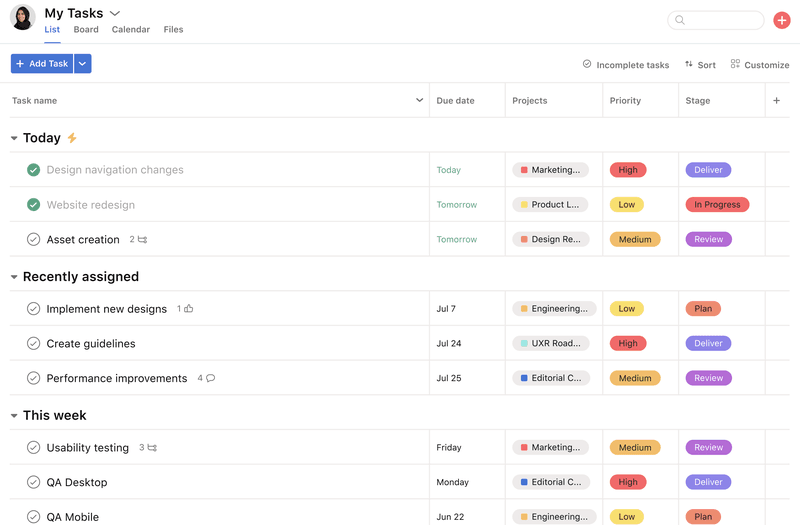
Key features
- Task management and prioritization
- Workflow builder
- Goal tracking
- Multiple views and dashboards (timeline, calendar, Kanban board)
- Automation features to streamline processes
- Integrations with dozens of applications, including Slack, Gmail, MS Teams, Dropbox, and Tableau
Pricing
Asana offers 4 pricing plans:
- Basic – free
- Premium – from $10.99/user/month
- Business – $24.99/user/month
- Enterprise – custom pricing
G2 review 4.3/5
6. Gartner – for researching your target industry
Gartner is a research and consulting organization. Its proprietary tool is called Product Decisions and it helps to analyze customer needs and how well they are satisfied by competitors in your target market. Such insights enable you to make informed roadmap decisions.
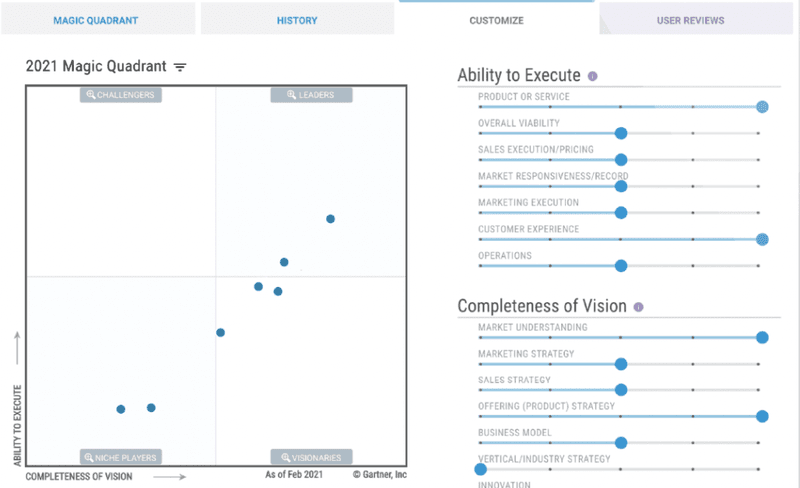
Key features
- Customized reports based on over one million live data points
- Impressive analytics powered by 20+ proprietary algorithms
- Insights from Gartner analysts
Pricing
Custom pricing
G2 review 4.0/5
7. Dragonboat – for aligning product development with OKRs
Dragonboat is a product portfolio management platform that enables product teams to align their OKRs with product initiatives.

Key features
- Initiative management
- Feedback and request centralization
- Allocation and prioritization tools
- Roadmapping
- Auto tracking and risk alerts
- On-demand stakeholder updates
- Integrations (Salesforce, Zendesk, Slack, Asana, Jira, Azure DevOps, Shortcut, Gmail, YouTrack)
Pricing
Dragonboat offers 3 plans:
- Roadmap Product – from $50/user/month
- Portfolio Product – from $100/editor/month
- Outcome Accelerator – from $150/editor/month
G2 review 4.9/5
8. Zoom – for conducting interviews to help with user research
Zoom is a video conferencing solution that grew in popularity during the Covid-19 pandemic. It’s a go-to platform for video calls, meetings, webinars, and training sessions for many teams around the world. Product teams can leverage its functionality for user interviews and focus groups.

Key features
- Video meetings for up to 1,000 attendees
- Breakout rooms
- Whiteboard for real-time collaboration
- Team chat and virtual working spaces
- Appointment scheduler
- Integrations with mail and calendar for automatic generation of invites
Pricing
Zoom offers 5 different plans:
- Basic – free
- Pro – $14.99/user/month
- Business – $19.99/user/month
- Business Plus – custom pricing
- Enterprise – custom pricing
G2 review 4.5/5
9. Slack – for communicating seamlessly with team members
Slack is a communication and collaboration platform designed with business users in mind.
It enables teams to reduce the number of meetings and emails while maintaining effective communication via a range of media, including text, voice, and video calls, and clips with internal and external stakeholders.

Key features
- Direct messaging
- Channels for group chats
- Huddles – for video and voice calls
- Canvases for a real-time collaboration
- Workflow builder
- Integrations with dozens of project management, productivity, and workspace tools, including Asana, and Office 365
Pricing
There are 4 Slack plans:
- Free
- Pro – from $7.25/user/month
- Business+ – from $12.50/user/month
- Enterprise Grid – custom pricing
G2 review 4.5/5
10. Pitch – for enabling product managers to pitch plans to stakeholders
Pitch is a presentation application. It allows you to quickly create presentation decks that you can share to enhance communication with your stakeholders. Once you share your presentation, you can analyze user engagement and adjust your communication strategy accordingly.
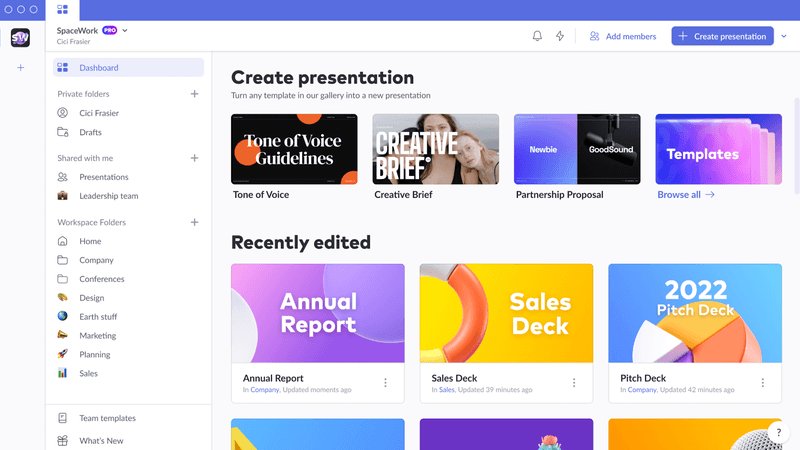
Key features
- Drag and drop interface
- Templates so you can start in no time
- Collaboration features
- Easy sharing – via a link or by embedding on a website
- Analytics – track who opened the presentation and which slides grabbed their attention
Pricing
There are 3 Pitch plans:
- Starter – free
- Pro – from $8/user/month
- Enterprise – custom pricing
G2 review 4.4/5
11. Miro – for asynchronous ideation and brainstorming
Miro is an online collaborative whiteboard platform that enables distributed teams to work effectively together, either in real-time or asynchronously.
It’s often used for ideation and brainstorming but thanks to numerous templates, you can use it at any stage of the product management process.
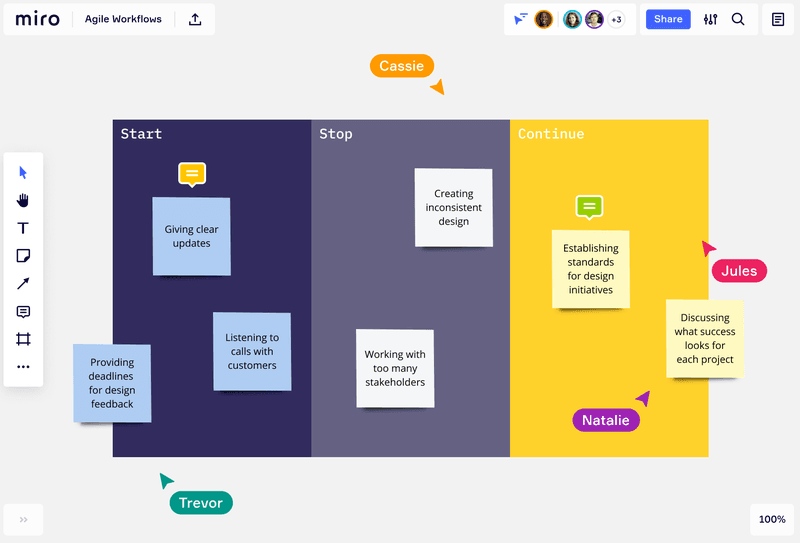
Key features
- Unlimited canvas space
- Presentation mode
- 1,000+ templates – both Miro- and community-created
- Integrations with other tools like Zoom, Slack, Webex, MS Teams, Google Drive, and Sketch
Pricing
Miro offers 4 pricing plans:
- Free
- Starter – from $8/user/month
- Business – from $16/user/month
- Enterprise – custom pricing
G2 review 4.8/5
12. Figma – for product designing and prototyping
Figma is a cloud-based all-in-one design platform. Product teams use it for collaborative interface design, prototyping, user testing, and creating design systems.
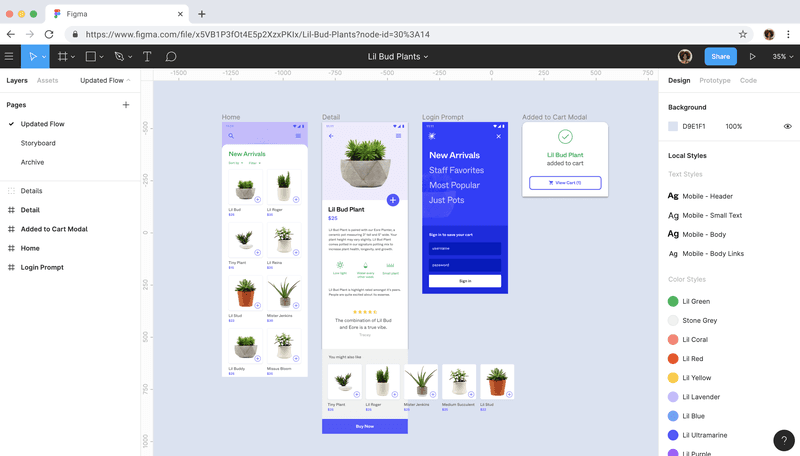
Key features
- Open design systems for consistency across the organization
- Dev Mode for easy conversion into code
- Integrations with popular collaboration, productivity, developer, and analytics tools like Mixpanel, Slack, GitLab, or Asana
Pricing
There are 4 Figma plans to choose from:
- Free
- Professional – from $12/editor/month
- Organization – from $45/editor/month
- Enterprise – from $75/editor/month
G2 review 4.7/5
13. Hotjar – for tracking user behavior
Hotjar is an analytics tool that provides granular insights into how users interact with websites or digital products. It helps SaaS businesses understand user behavior, optimize user experience, and improve conversion rates.
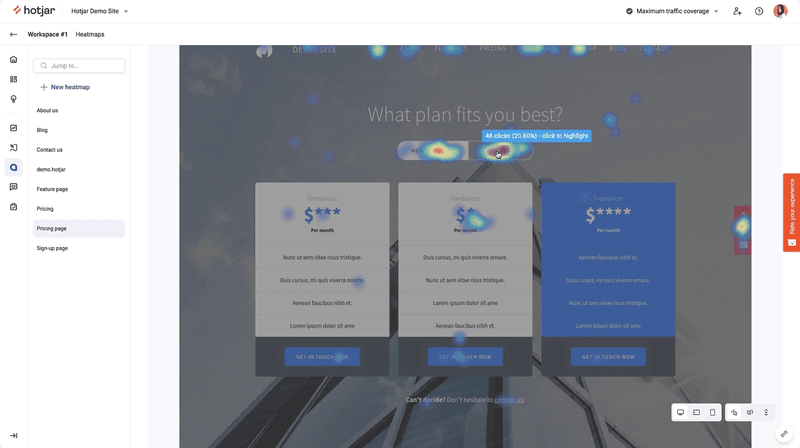
Key features
- Heatmaps
- Session recordings for detailed analysis of user interactions
- Survey and feedback tools
- Conversion funnels
- Easy sharing of key customer insights with Highlights
- Engage for 1-2-1 user interviews
Pricing
Hotjar offers 4 plans:
- Basic – free
- Plus – from $32/month
- Business – from $80/month
- Scale – from $171/month
G2 review 4.3/5
14. Maze – for enabling a product manager to create data-driven decisions
Maze is a user-testing platform. It allows you to carry out usability and prototype tests and extract actionable insights from real users to guide the UX design process.
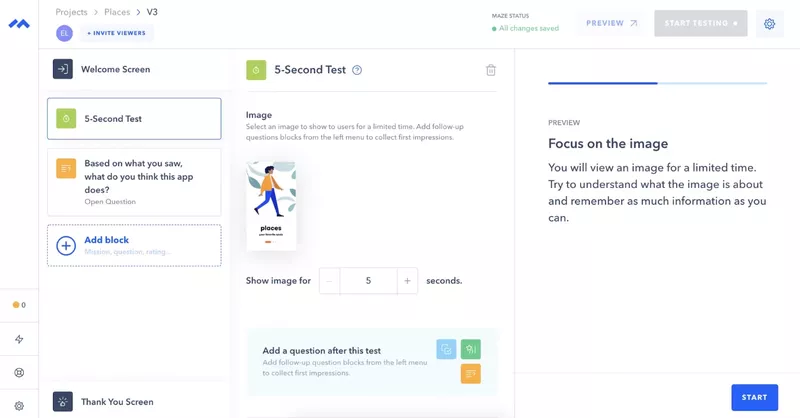
Key features
- Prototype testing
- Live website testing – including 5-second tests
- Feedback surveys
- Card sorting and product tree
- Participant recruitment and management features
- Automated reports
Pricing
To use Maze, you have to choose one of 3 plans:
- Free
- Professional – from $75/month
- Organization – custom pricing
G2 review 4.5/5
15. VWO – for A/B testing
VWO is a tool for conducting A/B testing and conversion rate optimization. It allows businesses to experiment with different versions of their website or landing pages to improve conversions. This can be during the MVP stage as well as after the product is launched.
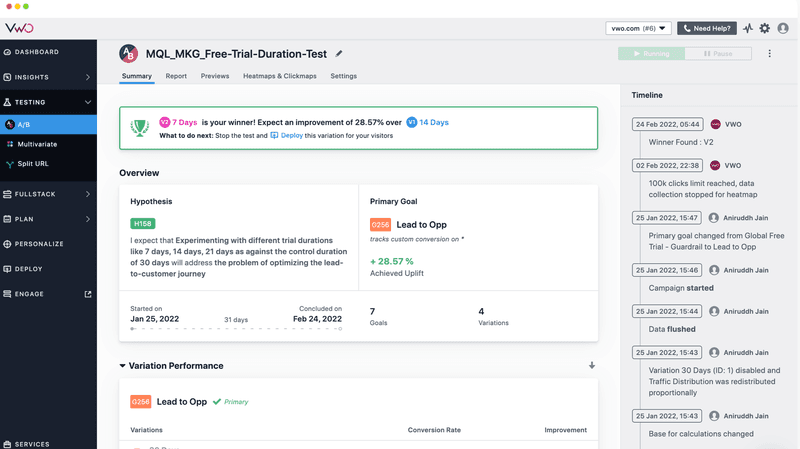
Key features
- A/B and multivariate testing for web and mobile products
- Session recordings and heatmaps
- Form and funnel analytics
- Surveys
- User experience personalization based on data insights
Pricing
There are 4 VWO plans available:
- Free
- Growth – from $160/month
- Pro – from $384/month
- Enterprise – from $854/month
G2 review 4.3/5
How to choose the best product management platform for your SaaS?
Start looking for the perfect product management tool for your team by listing the use cases you’re going to use it for or in other words, the problems that you want to solve.
In the next stage, research the tools that could help you achieve your objectives.
Once, you have a long list of possible options, it’s time to look at the prices to eliminate the ones that exceed your budget. There’s no point wasting your time researching tools that you can’t afford. When doing so consider not only your current needs but also future ones.
After weeding out the unaffordable tools, it’s time to look at their exact features in more depth. This will help you find the best match for your needs. This stage is not always easy as product websites are not always specific enough, so you may need to look at:
- Product documentation
- Release notes
- Public roadmap
- Video tutorials – created by the company as well as independent creators
- Review websites like G2 or Capterra
Having shortlisted a small number of tools, take advantage of free trials or free plans if they’re available. Booking a demo before you try out the tool yourself is a good choice as it will show you how the product applies to your unique circumstances.
Finally, look at the pricing plans. Does the plan you’re interested in give you access to the features you need? This will help you avoid expensive disappointments.
Conclusion
There’re tons of superb product management software tools for product managers to choose from. The choice should be based on a combination of factors. These include functionality, cost, and the overall user experience that the product delivers.
If you want to see how Userpilot can help you gain insights into customer behavior, needs and preferences, and drive product adoption, book the demo!






